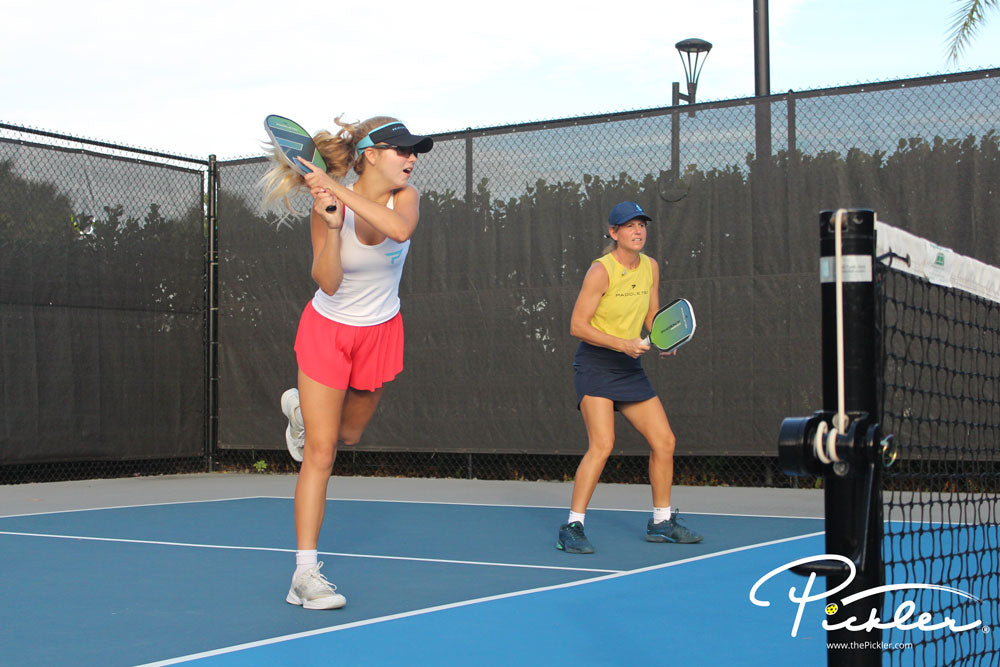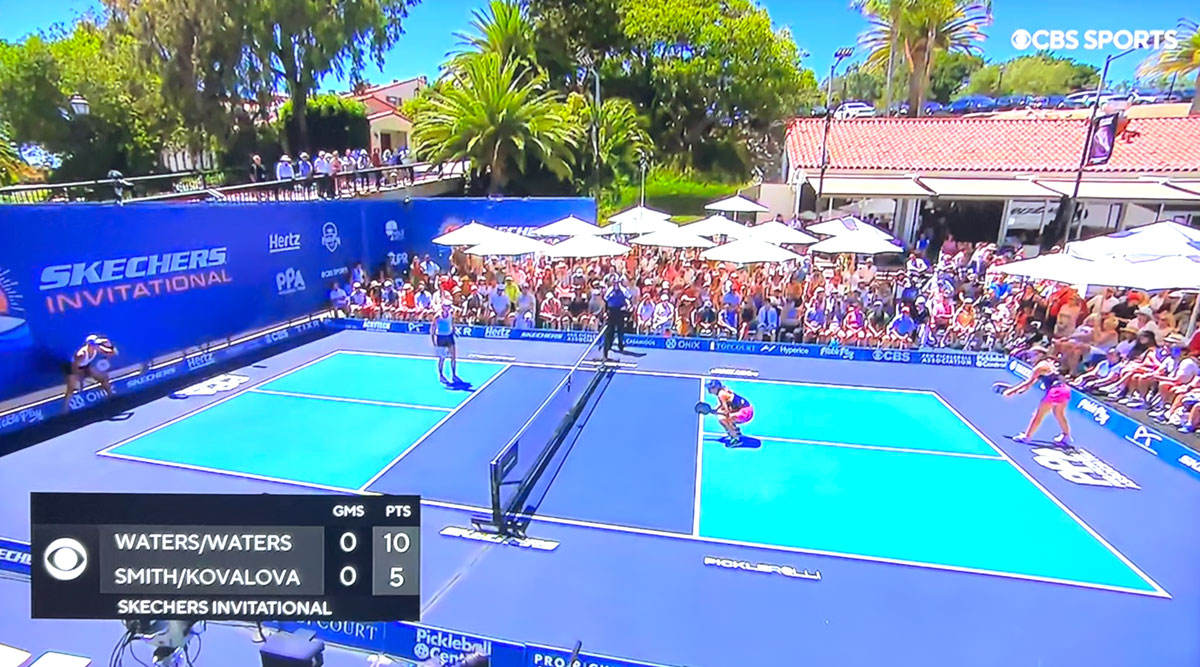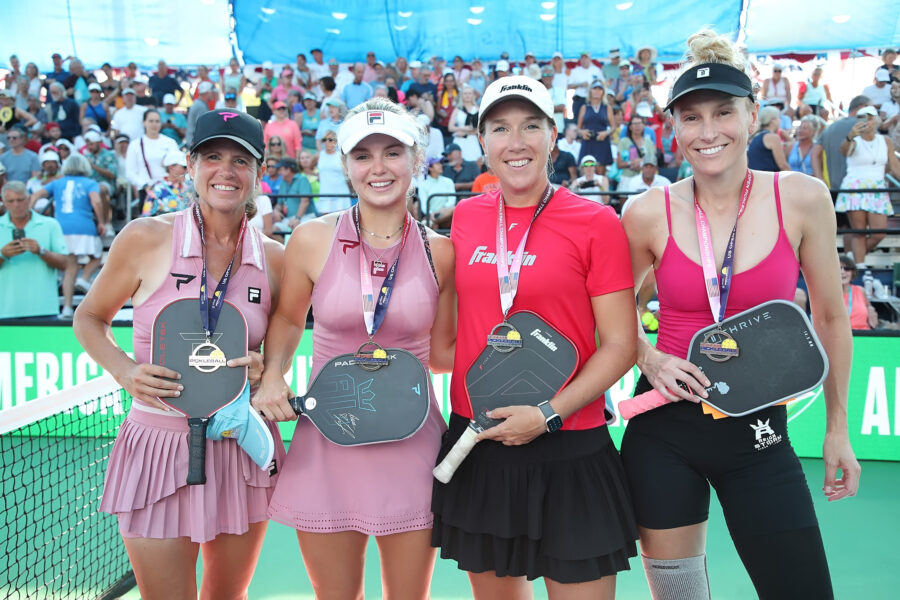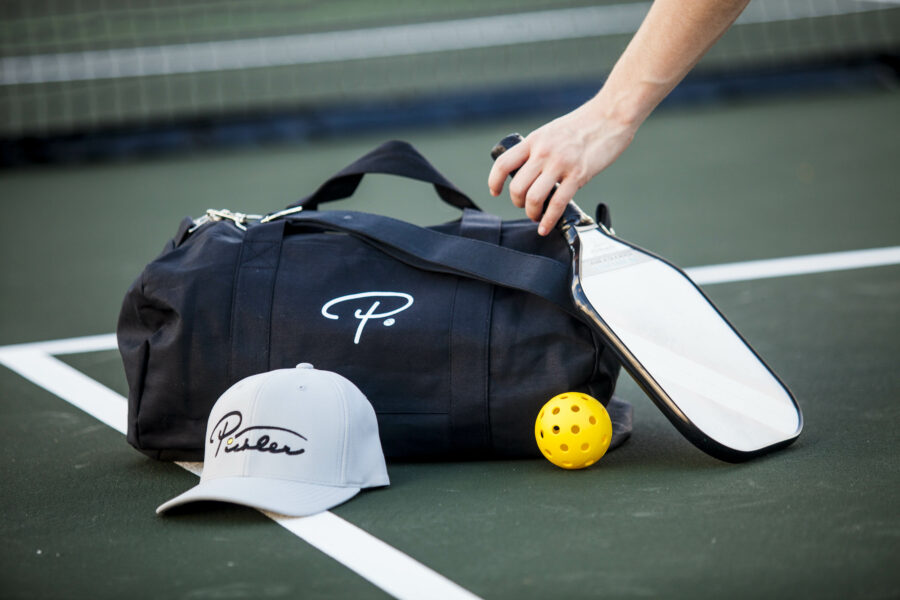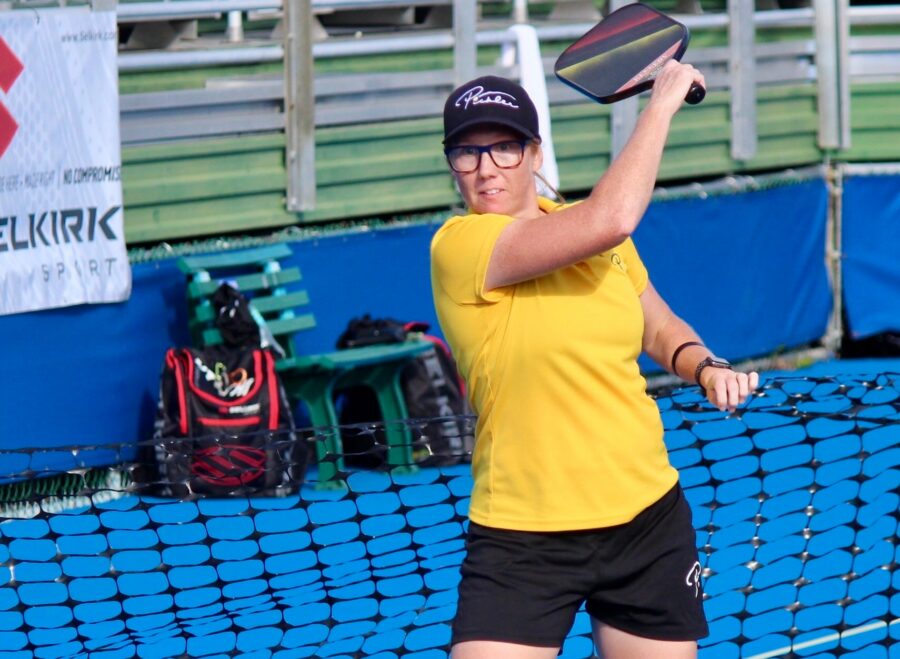Pickleball hit the major broadcast network of CBS for the first time in the history of the sport. On a game point in the live match featuring Leigh Waters—Anna Leigh Waters versus Lucy Kovalova—Callie Smith, an unusual strategy was spotted on CBS… the “I” Formation. This is not the first time that Team Waters has whipped out this pickleball strategy. However, with such a high-profile event on CBS, many of you may be thinking, “What were they doing?” So, let’s talk about it…
Typically, in the sport of doubles pickleball, both players on the serving team will be back by the baseline before and after the serve. This is because the serving team must let the pickleball bounce—in other words, pickleball has a two-bounce rule, requiring the pickleball to bounce once on both sides of the net before any player can hit the pickleball out of the air—or volley the pickleball. So, the general rule of thumb as the serving team is to stay back by the baseline to allow the pickleball to bounce in front of you.
The “I” Formation runs counter to this general rule of thumb.
In the “I” Formation, the server stays back by the baseline, while the other player on the serving team crouches in the middle of the pickleball net, just behind the Kitchen line. The idea behind this pickleball strategy is to:
- Cause confusion for your opponents, as it is a unique and a rarely used pickleball strategy; and
- Put additional pressure on your opponents to hit a quality fourth shot, as one player on the serving team will already be at the net ready for an aggressive put away shot (think of this like an “extreme Shake and Bake.”
With these dual purposes in mind, the “I” Formation is a difficult pickleball strategy to execute. This is because:
- The server needs to cover almost the entire side of the pickleball court to track down the third shot. As a result, the server typically needs to have quick feet, a strong third shot, and likely be a good singles player (in other words, singles players are more accustomed to covering the pickleball court). With that said, oftentimes, the player at the net becomes a target that the receiver will try and hit (and if the receiver hits the player at the net, then the receiver wins the rally!). So, many times, the server will not have to move to far, as a lot of returns will come down the middle of the pickleball court.
- The player on the serving team at the pickleball net needs to avoid the pickleball twice—once on the return of serve (because the pickleball needs to bounce twice, per the two-bounce rule in the sport) and then, again, when the server hits the third shot. The server needs to hit the third shot in a direction that does not hit his or her partner at the net in the back.
- By being in the “I” Formation, the serving team could get out of position and end up on the wrong side of the pickleball court. For instance, both partners could end up on the same side of the pickleball court and inadvertently leave open the other side of the pickleball court. As a result, the “I” Formation takes a lot of practice and chemistry with your partner.
The “I” Formation is very much a “high risk, high reward” kind of pickleball strategy, and is not right for everyone and is not right for every situation. However, if you like unexpected and aggressive pickleball play like Leigh Waters and Anna Leigh Waters, then you could use this “I” Formation strategy when you are the serving team in order to surprise your opponents and give your opponents a different look on the pickleball court.
Tips for Using the “I” Formation on the Pickleball Court
If you do use this “I” Formation pickleball strategy, keep these few tips in mind:
- Use the “I” Formation with caution and very sparingly. This strategy works best when it has an element of surprise. Also, use the “I” Formation if you are either ahead or are desperate for a new look to change momentum. Remember, this strategy is high risk, high reward, so use it at the right times. (To note, the risk of failure only costs you a serve, not a point, if you use the “I” Formation like Team Waters on the serve.)
- Hit a strong, deep serve to put pressure on your opponents’ return of serve.
- Hit a strong, aggressive third shot—likely a drive to the weaker of your two opponents. The goal is to get your opponents to hit a weak fourth shot. Also, it is typically easier to put away the fourth shot when it is to the net player’s forehand side, so try to hit the third shot either to the middle or to your opponent on the even side of the pickleball court.
- Be aggressive as the net player. The idea is to be aggressive and apply pressure at the pickleball net, which is why one member of the serving team is already at the net. So, make sure the net player does just that—plays aggressive!
- If you do not put away your opponents’ fourth shot, then try to neutralize the point by getting both players to the Kitchen line. The “I” Formation is much less effective if you cannot win the point early. One way to help do this is to try to split the pickleball court after the third shot. In other words, both partners on the serving team should have an idea of which side of the pickleball court they are responsible for after the third shot.
- Practice with your partner. A lot of things can go wrong with this pickleball strategy, so be sure to iron out the kinks as much as possible in practice.
Tips for Defending Against the “I” Formation on the Pickleball Court
If this “I” Formation pickleball strategy is used against you, try the following:
- First and foremost, do not get distracted. Ignore the player at the net and play your game.
- Hit a strong, deep return of serve to make the third shot as difficult as possible. Consider hitting your return deep through the middle to give the server less angles to work with. If you are feeling super aggressive, consider thinking like a singles pickleball player. Hit a return toward the server’s weaker side, about halfway up the sideline with an angle that will carry the pickleball wide off of the court. This will pull the server well off the pickleball court, making for a difficult third shot. But, be careful with this approach. You will be more prone to making mistakes (e.g., hitting the pickleball wide out of bounds), and you will be giving the server more angles to work with.
- Keep your fourth shot low and out of reach of the net player. Remember, the player at the net is attempting to put your fourth shot away. So, keep your fourth shot low and out of reach to neutralize your opponent.
Are you willing to take big risks for big rewards like Team Waters?
